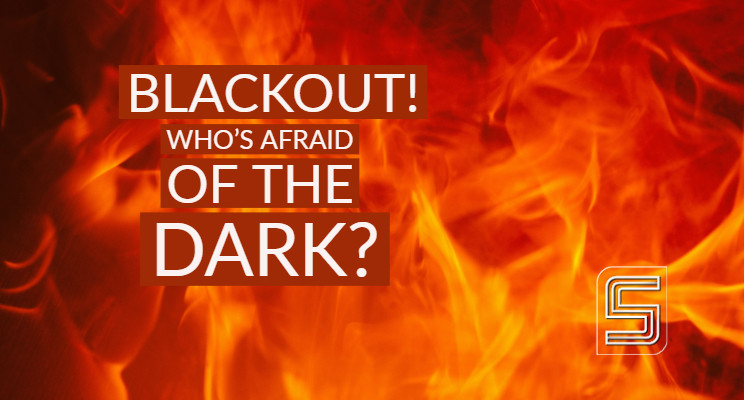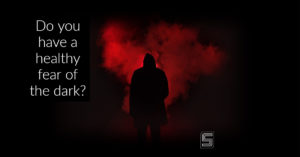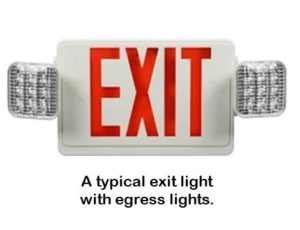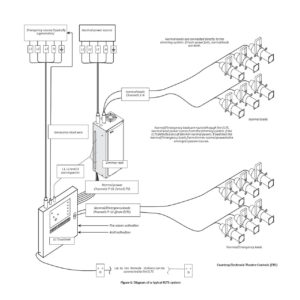
Who’s afraid of the dark is an appropriate question to be asking as we approach the season of ghosts, ghouls, and assorted monsters knocking at our doors demanding their sweet tribute. In the performing arts industry, we all know the value of the perfect blackout. But as theatre professionals, we are the guardians of our audience and we need to have a healthy fear of the dark. In an emergency situation, it’s imperative for us to know how people will exit the space and whether we have the necessary emergency lighting.

So what happens when there’s an emergency? What if you’re sitting in the audience with 2,000 of your closest friends, and the lights go out when they’re not supposed to?
In most cases, municipal code requires a battery backup emergency lighting system to activate when the power goes out. This is often achieved by incorporating the emergency lights into the exit signs. Though these battery powered lights are only good for about 30 minutes once activated, they will supply enough light to safely exit the building. As long as they’ve been properly maintained.
These devices all have a local test switch much like smoke detectors, and a monthly check is recommended to make sure the equipment is functioning properly. At minimum, the functionality of these lights should be tested and inspected annually. In most jurisdictions, this will happen when your local fire marshal visits. It’s always a good idea to make sure the batteries are fresh, and the lights function, before that inspection.
An alternative that we see in new installations with LED houselights is a more sophisticated approach. There is a device called an emergency lighting transfer switch (ELTS). This switch is usually tied into the house lights and will activate them when the power goes out. The ELTS can be powered by generator or battery backup, and provides better lighting that is familiar to the occupants. In most cases, it also affords more than 30 minutes of light depending on the power source. Being a central system, ELTS requires less maintenance than the battery powered egress lights. And it can also be triggered by remote stations, allowing users to activate the system when needed.
Regardless of your venue’s equipment, emergency lighting must be maintained and regularly inspected. In addition, have training in place for your house staff so they know how to deal with power outages and evacuations. Lastly, form a partnership with your local fire marshal for the safety of your colleagues and your audience. It’s in everybody’s best interest to have a successful, safe event. Put that healthy fear of the dark to work to make a safer space.




